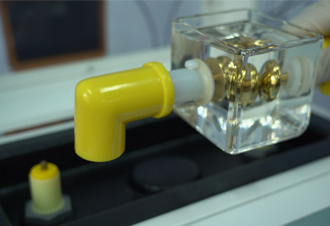 English
English


Dielectric Breakdown
Dielectric Breakdown Understanding the Phenomenon
Dielectric breakdown is a critical phenomenon in electrical engineering and material science, characterized by the loss of a material’s electrical insulating properties. When an insulating material is subjected to a voltage that exceeds its dielectric strength, it can experience a sudden surge of electric current, resulting in what is known as breakdown. This process can result in irreversible damage to the material, leading to catastrophic failures in electrical systems.
At the core of dielectric breakdown is the concept of dielectric strength, defined as the maximum electric field that a material can withstand without undergoing failure. Different materials have varying dielectric strengths, influenced by their molecular structure, temperature, and the presence of impurities. For instance, air has a dielectric strength of approximately 3 kV/mm, while materials like Teflon and glass can withstand much higher voltages due to their superior insulating properties.
The breakdown process can be initiated in several ways. In gases, it often occurs through a mechanism known as avalanche breakdown, where free electrons become accelerated by the electric field, leading to the ionization of nearby gas molecules. This chain reaction quickly creates a conductive plasma path, allowing current to flow freely and causing the gas to become ionized. In solid insulators, breakdown is often due to the presence of defects, thermal stress, or electrical stress that can weaken the material's structure.
dielectric breakdown

The consequences of dielectric breakdown can be severe, including equipment failure, electrical surges, and fires. In high-voltage applications, such as transmission lines or electronic devices, understanding and mitigating dielectric breakdown is vital. Engineers employ various strategies to enhance dielectric strength, such as improving material purity, optimizing thickness, and using composite materials designed to withstand higher voltages.
In practical applications, dielectric breakdown can be both a challenge and a tool. For example, in specific scenarios, controlled breakdown is utilized in gas discharge tubes, where the breakdown of gas is exploited for protective devices that safeguard circuits from overvoltage conditions. Similarly, techniques like corona discharge are employed in applications like air purification and ozone generation.
Research in the field of dielectric materials is ongoing, with scientists striving to develop materials that exhibit higher dielectric strengths while maintaining advantageous mechanical properties. Advances in nanotechnology and material science are paving the way for new insulating materials with enhanced performance metrics, which could significantly improve the reliability and efficiency of electrical systems.
In conclusion, dielectric breakdown is a complex phenomenon with significant implications in various fields. As technology evolves, understanding the mechanisms of dielectric breakdown will remain crucial for designing safer and more efficient electrical systems, driving innovation, and ensuring the longevity of electrical infrastructures.
-
Differences between open cup flash point tester and closed cup flash point testerNewsOct.31,2024
-
The Reliable Load Tap ChangerNewsOct.23,2024
-
The Essential Guide to Hipot TestersNewsOct.23,2024
-
The Digital Insulation TesterNewsOct.23,2024
-
The Best Earth Loop Impedance Tester for SaleNewsOct.23,2024
-
Tan Delta Tester--The Essential Tool for Electrical Insulation TestingNewsOct.23,2024





